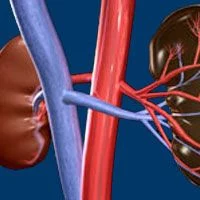Second-Line Cabozantinib Produces Similar Outcomes in RCC, Regardless of Frontline Immunotherapy Choice
Treatment with cabozantinib (Cabometyx, Cometriq) in the second-line setting generated similar time-to-event end points and response rates in patients with advanced renal cell carcinoma, regardless of frontline immune-oncology combinations.
Renal Cell Carcinoma

Treatment with cabozantinib (Cabometyx, Cometriq) in the second-line setting generated similar time-to-event end points and response rates in patients with advanced renal cell carcinoma, regardless of frontline immune-oncology combinations, according to a data set from the International Metastatic Renal Cell Carcinoma Database Consortium (IMDC) presented during the 2022 ASCO Genitourinary Cancers Symposium.
In addition, investigators evaluated outcomes for patients who received approved third-line treatment after second-line cabozantinib.
Broadly, the median time to treatment failure (TTF) was 7.59 months (95% CI, 6.61-8.98), median overall survival (OS) was 18.12 months (95% CI, 15.42-24.10), the 1-year treatment failure free rate was 34.3%, the 1-year OS was 63.5%, and the overall response rate (ORR) was 26.2%, according to lead author Vishal Navani, MA, MBBS, a medical oncology fellow at the University of Calgary, Tom Baker Cancer Centre, Alberta, Canada.
Limited data are available about the activity of cabozantinib in the second line after first-line standard of care immunotherapy: ipilimumab (Yervoy) plus nivolumab (Opdivo) or immune-oncology/vascular endothelial growth factor (VEGF) inhibitor combinations (IOVE).
A total of 364 patients were identified who had received cabozantinib in the second line. In the first-line setting, 78 patients had received the ipilimumab plus nivolumab combination, 46 patients received the IOVE combination, and 222 patients received other first-line treatment. ORR, TTF, and OS were key end points. Hazard ratios (HRs) were adjusted for favorable, intermediate, and poor risk groups.
When outcomes for second-line cabozantinib were stratified by frontline therapy, investigators reported that patients who received ipilimumab plus nivolumab had a median TTF of 6.90 (95% CI, 6.05-not evaluable [NE]), a median OS of 21.44 months (95% CI, 12.07-NE), 1-year treatment failure free rate of 34.3%, 1-year OS of 66.6%, and an ORR of 26.4% (14/53 patients).
In patients treated with front-line IOVE, the median TTF was 5.72 months (95% CI, 4.41-NE), median OS was 15.68 months (95% CI, 9.27-NE), 1-year treatment failure free rate of 26.8%, the 1-year OS was 54.3%, and the ORR was 32.5% (13/40 patients).
In patients treated with a first-line therapy other than immunotherapy, the median TTF was 7.96 months (95% CI, 6.81-9.63), median OS was 18.41 months (95% CI, 14.99-25.78), 1-year treatment failure free rate of 35.7%, 1-year OS was 63.5%, and the ORR was 23.9% (43/180 patients).
After adjusting for IMDC risk groups, investigators reported that the HRs for second-line cabozantinib OS and TTF for IOVE vs ipilimumab plus nivolumab were 1.73 (95% CI, 0.83-3.62; P = .14) and 1.62 (95% CI, 0.89-2.95; P = .11), respectively.
When patients who received third-line therapy (n = 125) were stratified by second-line cabozantinib, investigators found that the median TTF was 3.22 months (95% CI, 2.76-5.82), the median OS was 10.92 months (95% CI, 9.44-20.02), the 1-year treatment failure free rate was 19.9%, the 1-year OS was 48.4%, and the ORR was 13.3% (12/90 patients).
The investigators concluded that time to event end points and response rates were similar regardless of which first-line immunotherapy was administered. In the third-line setting, post cabozantinib treatment, single-agent VEGF inhibitors also have activity, but as expected, response was diminished compared with earlier lines of therapy, wrote the investigators.
Reference
- Navani V, Wells C, Boyne DJ, et al. CABOSEQ: The efficacy of cabozantinib post up-front immuno-oncology combinations in patients with advanced renal cell carcinoma: Results from the International Metastatic Renal Cell Carcinoma Database Consortium (IMDC). J Clin Oncol. 2022;40suppl 6; abstr 318). doi: 10.1200/JCO.2022.40.6_suppl.318



